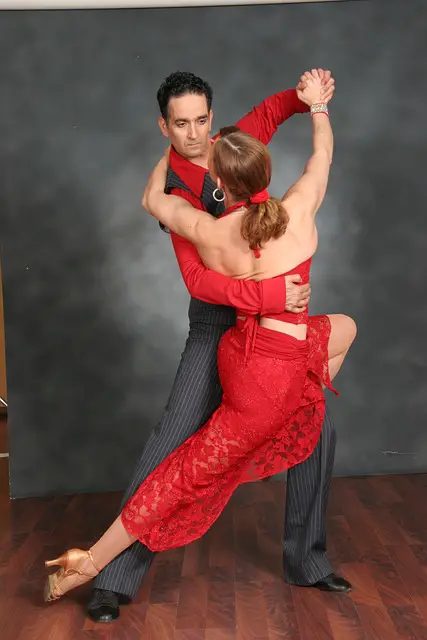Last Updated on July 31, 2023 by Janie Wilson
Latin dance is renowned for its passionate movements, infectious rhythms, and vibrant energy. When we think of Latin dance, Samba and Salsa are often the first styles that come to mind. However, the world of Latin dance is rich and diverse, offering a multitude of captivating styles beyond the well-known Samba and Salsa. In this blog post, we will take you on a journey to discover alternative Latin dance styles that deserve recognition and appreciation alongside Samba and Salsa. Additionally, we will delve into understanding samba and salsa differences to appreciate their unique characteristics and cultural significance.
Samba originated in Brazil and is characterized by its lively, energetic movements and syncopated rhythms. It has deep roots in African and Afro-Brazilian traditions and is often performed in carnival celebrations. Salsa, on the other hand, emerged from the fusion of various Latin and Afro-Caribbean dance styles, primarily in Cuba and Puerto Rico. It is characterized by its intricate footwork, fluid partner connections, and infectious beats. While both Samba and Salsa share elements of sensuality and rhythmic expression, they have distinct music, dance steps, and cultural influences. Understanding these differences allows us to appreciate the uniqueness of each dance form and explore the diverse world of Latin dance.
Let’s now delve into the alternative Latin dance styles.
- Bachata
Originating in the Dominican Republic, Bachata is a captivating dance style that embodies sensuality and romance. With heartfelt lyrics and the traditional sounds of guitars, Bachata music sets the mood for the dance. Its distinct hip movements and close partner connection create an intimate and passionate atmosphere on the dance floor, allowing dancers to express emotions and connect deeply through the dance’s smooth and rhythmic movements.
- Merengue
Hailing from the Dominican Republic, Merengue is a vibrant and exuberant dance style that exudes joy and liveliness. Known for its energetic footwork and hip movements, Merengue encourages dancers to move, spin, and sway in syncopated harmony. With its fast-paced rhythm and playful nature, Merengue brings people together in social gatherings and dance clubs, creating an infectious atmosphere that invites everyone to join in the fun and celebration of this beloved Latin dance style.
- Cha-Cha-Cha
Originating in Cuba, Cha-Cha-Cha is a dynamic and flirtatious dance style that brings a sense of fun and excitement to the dance floor. Characterized by its syncopated triple-step footwork, Cha-Cha-Cha’s infectious rhythm and playful movements create an exhilarating dance experience. With its versatility and adaptability to different music genres, Cha-Cha-Cha has gained widespread popularity worldwide, captivating dancers with its vibrant energy and providing opportunities for creative expression on the dance floor.
- Mambo
With its roots in Cuba, Mambo is an exhilarating and high-energy dance style that experienced a surge of popularity in the United States during the 1940s and 1950s. Combining Afro-Cuban rhythms with jazz influences, Mambo creates a fusion of intricate footwork, spins, and captivating partner work. This dynamic dance style showcases the dancers’ technical skill and musicality, as they navigate the fast-paced tempo and showcase their passion and flair on the dance floor.
- Rumba
Originating in Cuba, Rumba is a passionate and expressive dance style that reflects the essence of Afro-Cuban culture. It is characterized by its sensual hip movements, intricate body isolations, and intense emotional connection between partners. Rumba is a dance of seduction, embodying the spirit of love, desire, and longing.
- Cumbia
Cumbia is a popular dance style originating from Colombia, which has since spread throughout Latin America. It is characterized by its infectious rhythm and joyful movements that combine elements of African, European, and Indigenous cultures. Cumbia can be danced in various styles, including Cumbia Colombiana, Cumbia Sonidera, and Cumbia Villera, each with its unique flavor and choreography.
- Zouk
Zouk, originating from the French Caribbean islands of Guadeloupe and Martinique, is a captivating dance style that exudes sensuality and grace. Combining influences from Lambada, Samba, and other Caribbean dances, Zouk creates a flowing and smooth partner dance experience. This dance form is characterized by its intricate body movements, emphasizing fluidity and connection between partners. With its enchanting rhythms and close partner connection, Zouk invites dancers to express emotions and create beautiful shapes and lines, resulting in a mesmerizing and intimate dance experience.
- Tango
Although Tango is often associated with Argentina, its origins can be traced back to the neighborhoods of Buenos Aires and Montevideo in Uruguay. Tango is a passionate and dramatic dance style characterized by its close embrace, intricate footwork, and expressive movements. It is renowned for its intense connection between partners and its ability to convey a wide range of emotions.
Final Thoughts
Latin dance is a world of rhythm, passion, and cultural richness that extends far beyond the widely known Samba and Salsa. Exploring alternative Latin dance styles such as Bachata, Merengue, Cha-Cha-Cha, Mambo, Rumba, Cumbia, Zouk, and Tango opens up a whole new universe of captivating movements and vibrant music.

